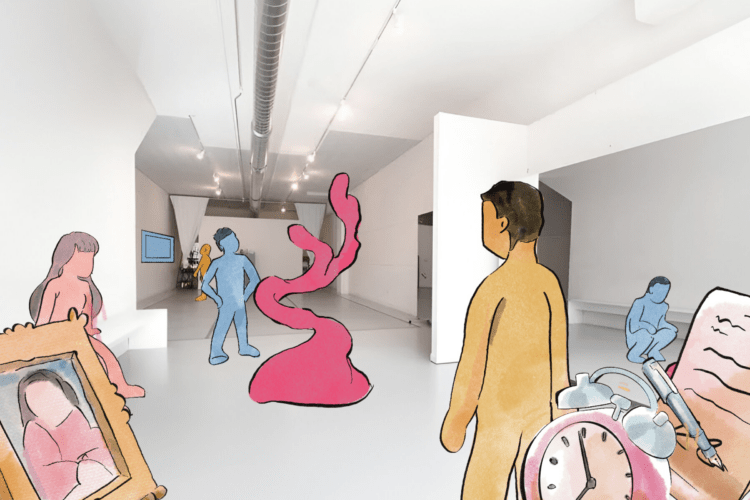
Since arriving in Chicago, I have visited hundreds of galleries to observe how artists curate their work and communicate their vision to an audience. I envisioned my own solo show for months, planning everything in my head. But making my dream a reality presented an entirely new set of challenges. Balancing my artistic intent with practical concerns like budget and time management was no easy task. I had to take the initiative and wrestle with the dilemma of who values my art and how to stay true to my identity.
In early Sept. 2024, I hosted my first solo show in Ashland, Chicago, titled “Echoes of Lakay” which showcases 15 of my paintings. At its core, my work is deeply thematic, aligning with the activities I’m involved in, from my background in visual and critical studies to my community outreach efforts. My show allowed me to examine my art style and statement in new ways, and consider how my pieces speak to larger narratives. Through this process, I’ve seen growth in myself — not just as an artist, but as a researcher and critical thinker. The show became a vulnerable display of my feelings, a testament to my evolving knowledge, and a deeper understanding of the world around me.
I did a lot of research prior to hosting my show, and I want to share the process with other artists looking to do the same.
The Step-by-Step Guide to Organizing your Solo Art Show
Step One: The Art
Be realistic with yourself. Have you created enough artwork? How diverse is the work (size, subject, medium)? What is your intent for wanting it on display? Are you sharing a narrative or displaying something more abstract?
Step Two: Location
Secure a location. The type of artwork you want to display will influence the space you need. Search for locations to rent or apply to for free. There are many websites and apps exclusively for event space rentals such as PeerSpace, HoneyBook, and EventUp. You may also want to consider a place significant to you, your studio, and/or your audience.
Step Three: The Team
Do you need to outsource assistance? Who are people you know that are reliable? This may, or may not, look like your best friends or family members. Utilize the relationships you have with people across the different departments at your school or workplace. Help is vital not only to the success of the show but also to your well-being throughout the process.
Step Four: When?
Art show openings usually occur on the weekends, specifically early afternoons or evenings. Starting your event around these times of the day and week allows for flexible arrival of guests. Your opening is when you present the work as that collection and dedicate time to interacting with the audience as the artist. Adjust your showing times to happen when you know your target audience is typically available.
Step 5: Marketing, Permits, and Selling
Always check what the legal requirements are for selling in the space. Do you need permits to ticket entry or sell your pieces? These answers will vary depending on multiple factors: Are you operating as a licensed business? Is it non-profit? Is this happening in a commercial location? To find answers, check your state’s local government website. You may need to visit your City Hall for assistance through any legal processes. When you market your show, practice talking to people inside your community about your work. Share posters, social media posts, and continue to share by word of mouth.
Conclusion
The operation of hosting an art show taught me that you must command the world to look at your art. The only real value to the piece is the value that you, the artist, give it. Show society how much you value your art, and it will too. Use these processes to learn how to talk about your art — why you make it, the concepts that inspire you.
For me, art is my identity, and to share my art is to share my story. Best of luck on sharing yours!







